For those seeking the authentic Italian experience, look no further than the self-autonomous region of Friuli Venezia Giulia. It is a region not often visited by tourists, although it’s no secret to Italians. The region is just over 1 and a half hours from Venice. Why not give the region a try? Here is a snapshot…
Using cities like Udine or Trieste as a base, it is possible to visit places such as Aquileia, Palmanova, Cormòns, Prepotto, and Cividale dei Friuli. English isn’t spoken widely here. Today there are three official languages spoken – Italian, Friulano (dialect) and Slovenian. The mix of languages and cultures create an exciting fusion in the local cuisine, with many restaurants following the ‘slow food’ movement.
1. Udine
Udine is a compact city with a lot to see. The main square in the Centro Storico is Piazza Giacomo Matteotti with great bars and cafes.
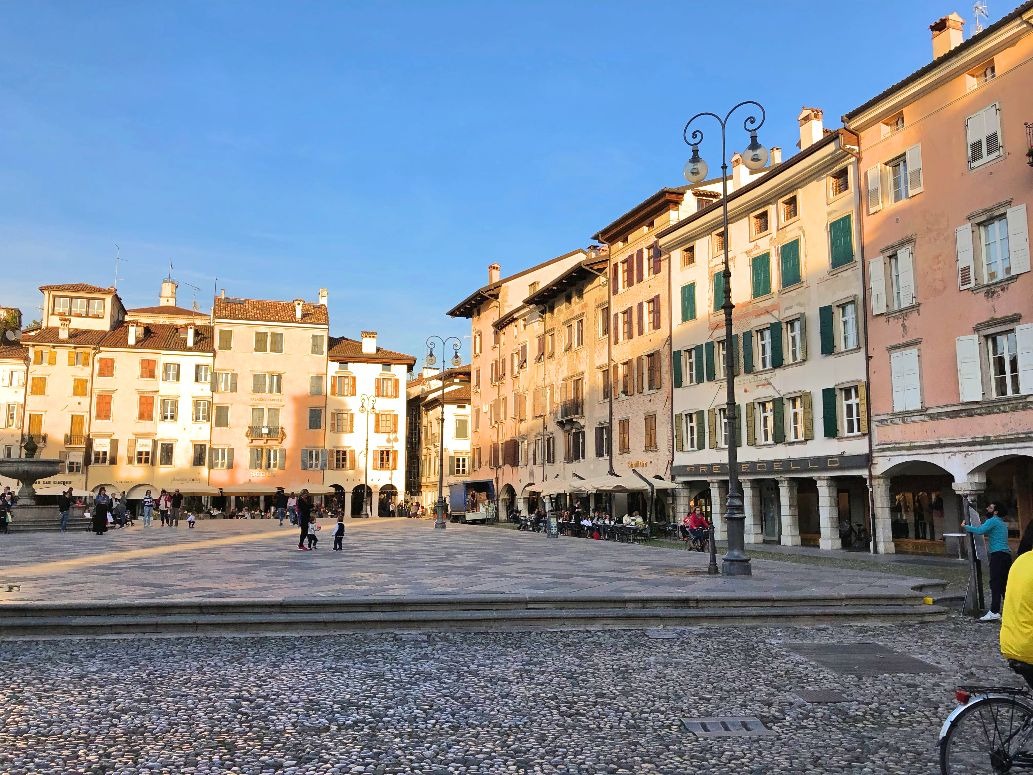
The jewel in Udine’s crown is the Piazza della Libertà. To see are the 15th-century Loggia del Lionello and the 16th-century Porticato di San Giovanni complete with a clock tower. There is also a Palladio designed gateway, the Arco Bollani. Follow the steps up a cobbled hill to the 16th-century castle. It is home to the Musei Civici e Galleria di Storia e Arte Antica for extensive archaeology and art collections.
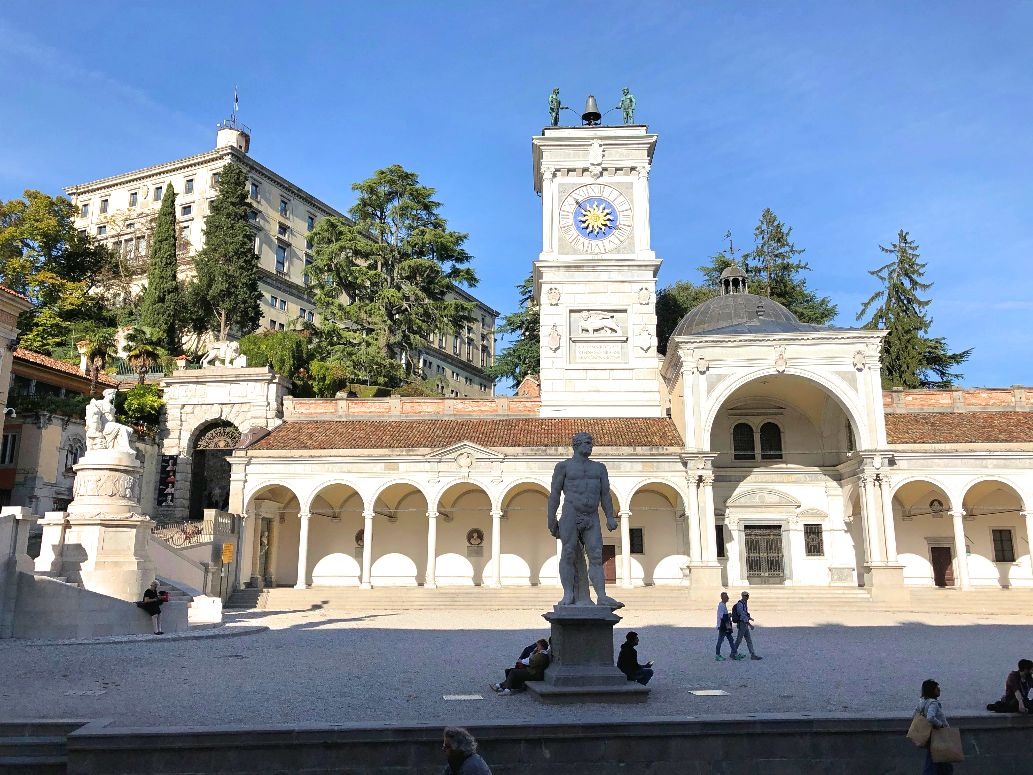
Next to the castle is the 12th century Chiesa di Santa Maria al Castello. Continue upwards to Piazza della Castello and be rewarded with fantastic views of Udine and the Friulian Alps. Recommended is the restaurant Casa della Contadinanza for lunch and refreshments. The restaurant sources local ingredients. They also do wine tastings.
Return the same way or take a path down to the ‘newer’ old town. The path can be found to the left of the church. For Piazza della Libertà head towards the gate Porta Manin, stopping first for a delicious gelato from Il Morettino Gelateria Artigianale.
2. Aquileia
One of my reasons for coming to Friuli Venezia Giulia was to see the UNESCO archaeological site of Aquileia. If travelling by public transport, it is possible to catch a bus from Udine to Aquileia (allow about 1 hour each way). The ruins of Aquileia are spread out over a large area, so head first to the tourist information centre. They provide a service (for a fee) where you can hire a portable audio device (in several languages) for each point of significance. Maps are provided as well. You can also hire bikes.
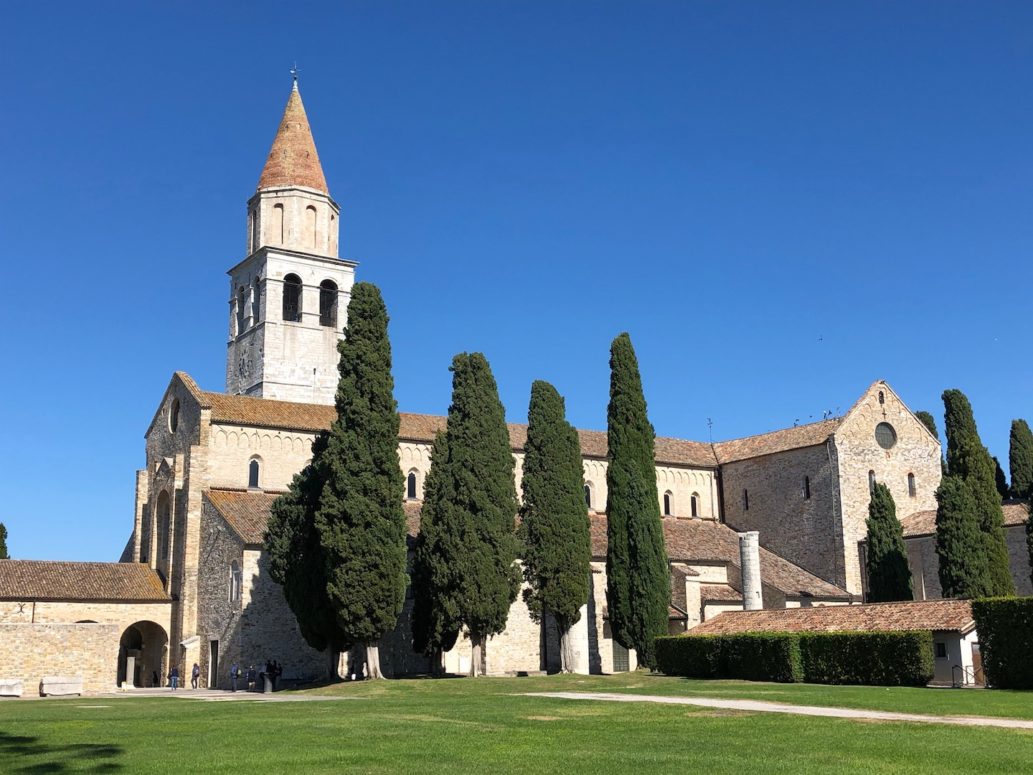
Highlights of the site are the AD313 basilica with its beautiful mosaic floor in the nave and the Cripta degli Scavi. The mosaic floors in both the nave and crypt are an excellent showcase of how fine craftsmanship developed over the centuries.
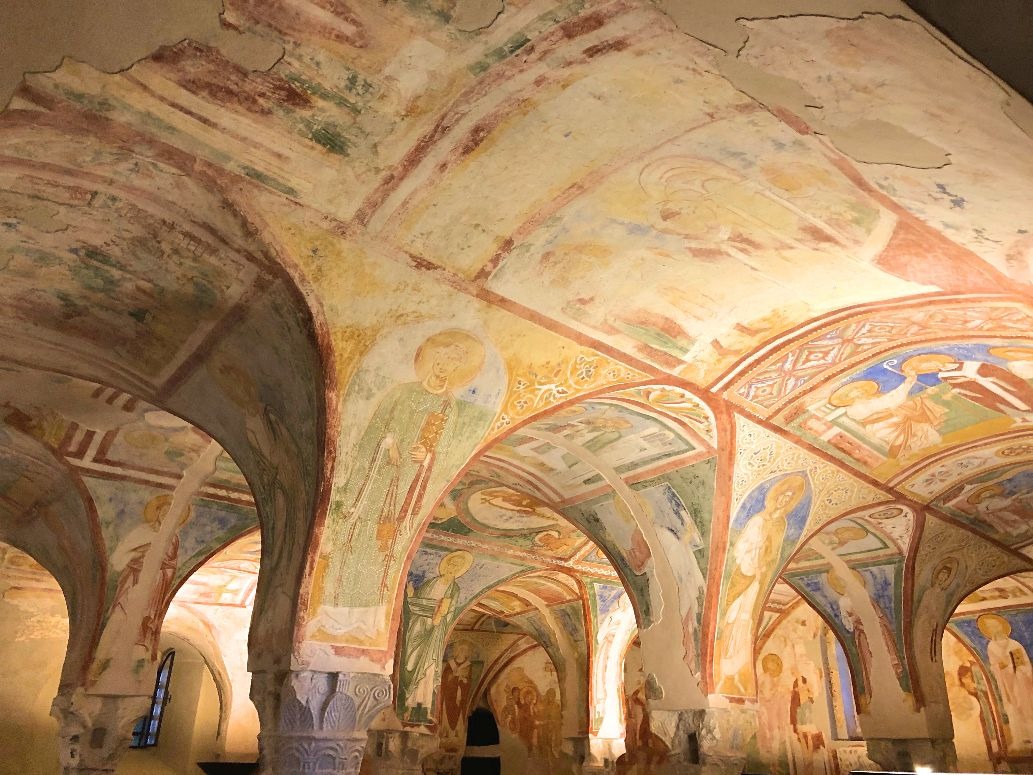
Close to the basilica is the village where there are shops and restaurants, as well as the fantastic Museo Archeologico Nazionale. For my visit I allowed about 4.5 hours. This gave me enough time to stop for lunch as well at Ristorante Hotel Patriarchi.
3. Palmanova
Palmanova is a Renaissance gem, being a planned fortress city that followed the ideals of a utopian city. It was built by the Venetian Republic in 1593 to withstand sieges. To explore the star-shaped fort, you can walk around the entire structure via a walking track. The track runs between the outer walls and middle walls.
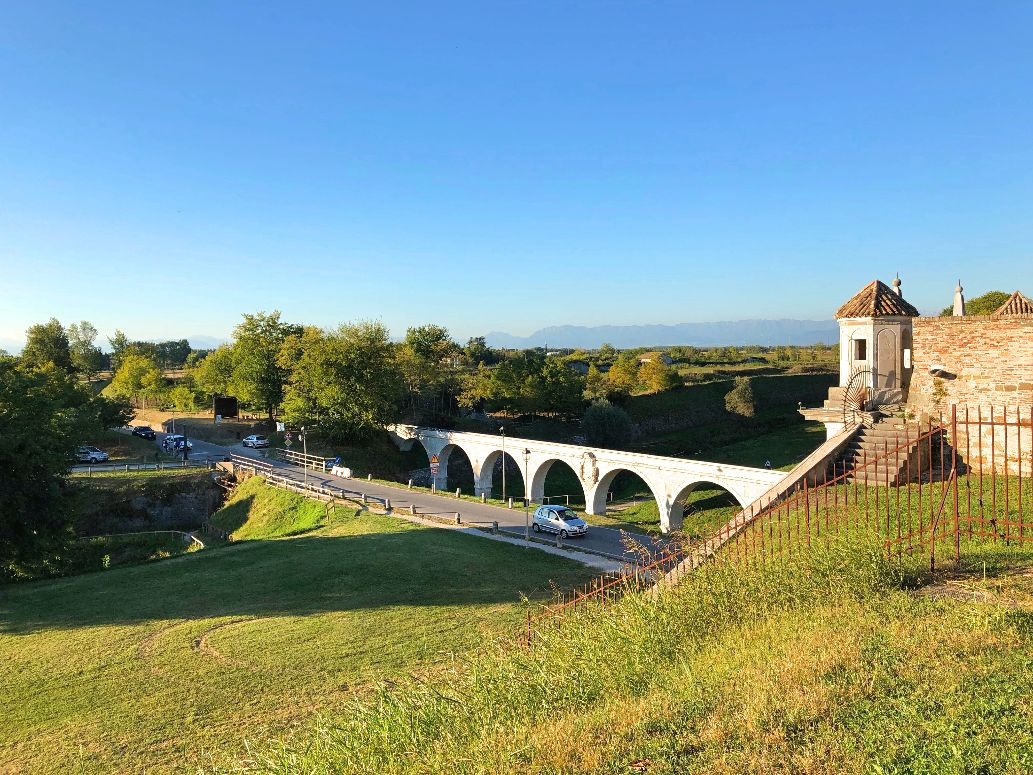
Three gates lead into the city, and by following them, these will take you to the hexagonal shaped Piazza Grande. This central piazza is where the beautiful white stoned Duomo is, as well as cafes and restaurants.
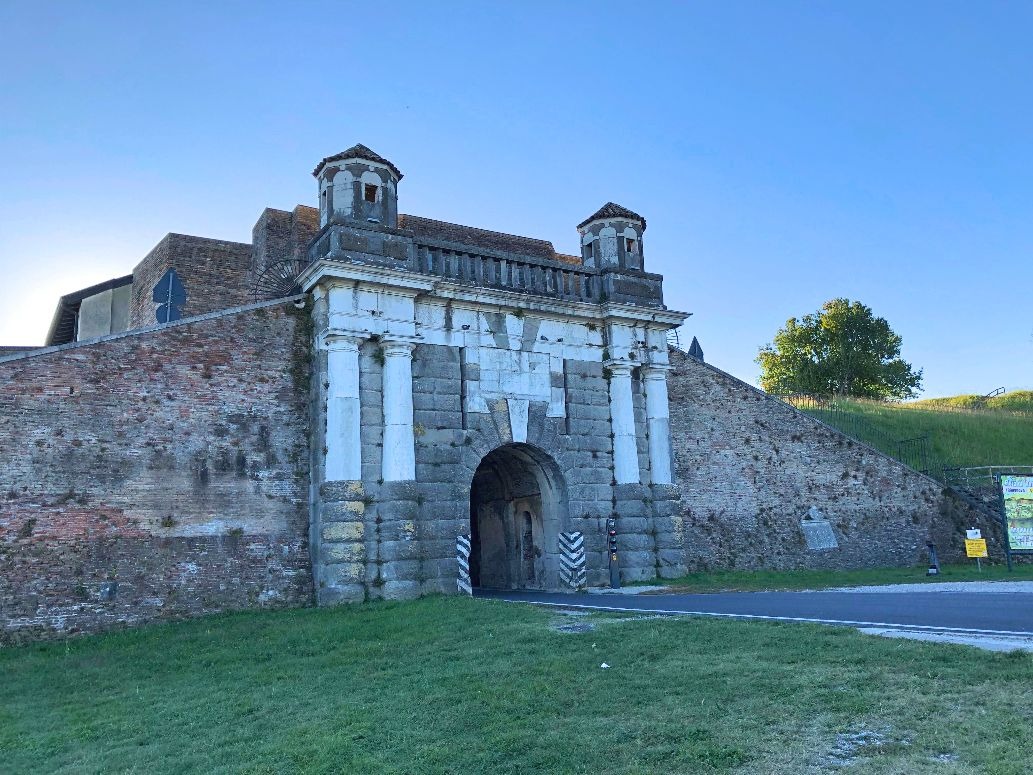
Also, to see are the Museo Civico and the theatre, Teatro Gustavo Modena. Getting to Palmanova is easy, either by bus or train from Udine. From the centre, the railway station in Palmanova is about a 1 km walk. Head for the Porta Udine, cross over the bridge to continue walking along Borga Udine and turn left onto the treelined avenue, Viale Stazione. Trains run hourly to Udine.
4. Cormòns
Cormòns was a town I visited en route to the village of Prepotto. I wish I had also spent more time in Cormòns. I caught the train here to pick up a bus and immediately I noticed how ‘un-Italian’ the town is. The influence is more Slovenian, and the language I could hear people speaking was actually Friulian. It’s a reminder that this part of Italy was up until the1950s a part of Slovenia.
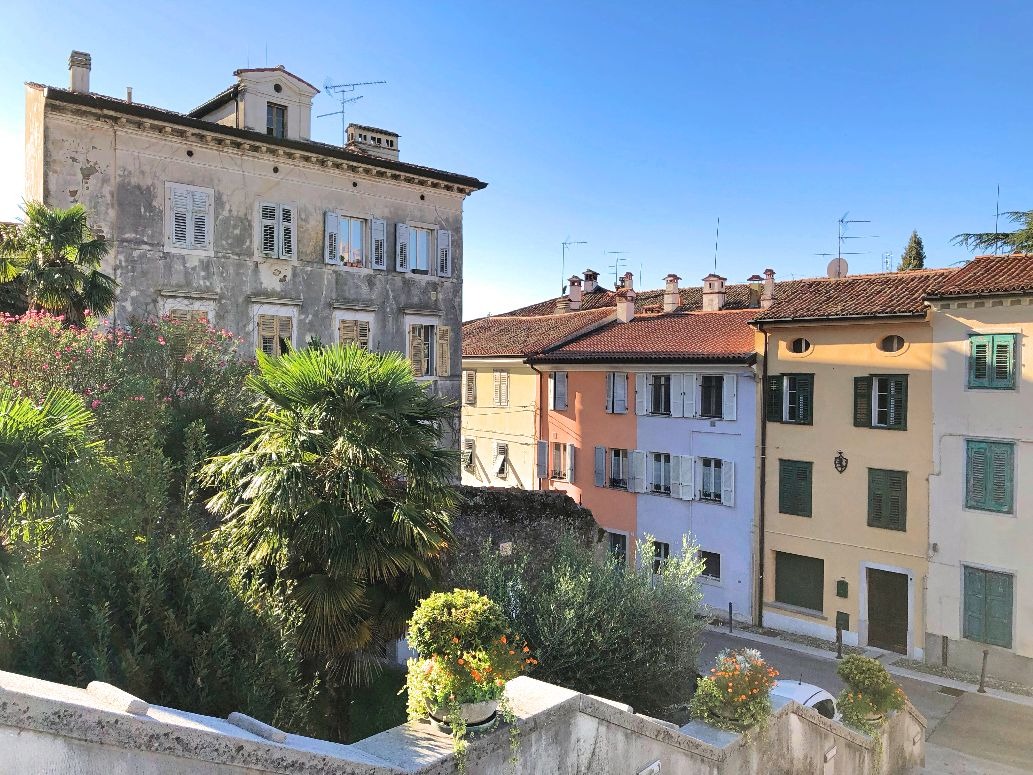
With some time to spare, I walked to the Centro Storico (15 minutes) and found a bustling town with beautiful churches and cafes. I had a delicious coffee at Caffè Massimiliano on 10 Piazza Libertà that reminded me more of a coffee from Austria or Germany than Italy. Close by is the beautiful Baroque church, Chiesa di Rosa Mistica-Santa Caterina.
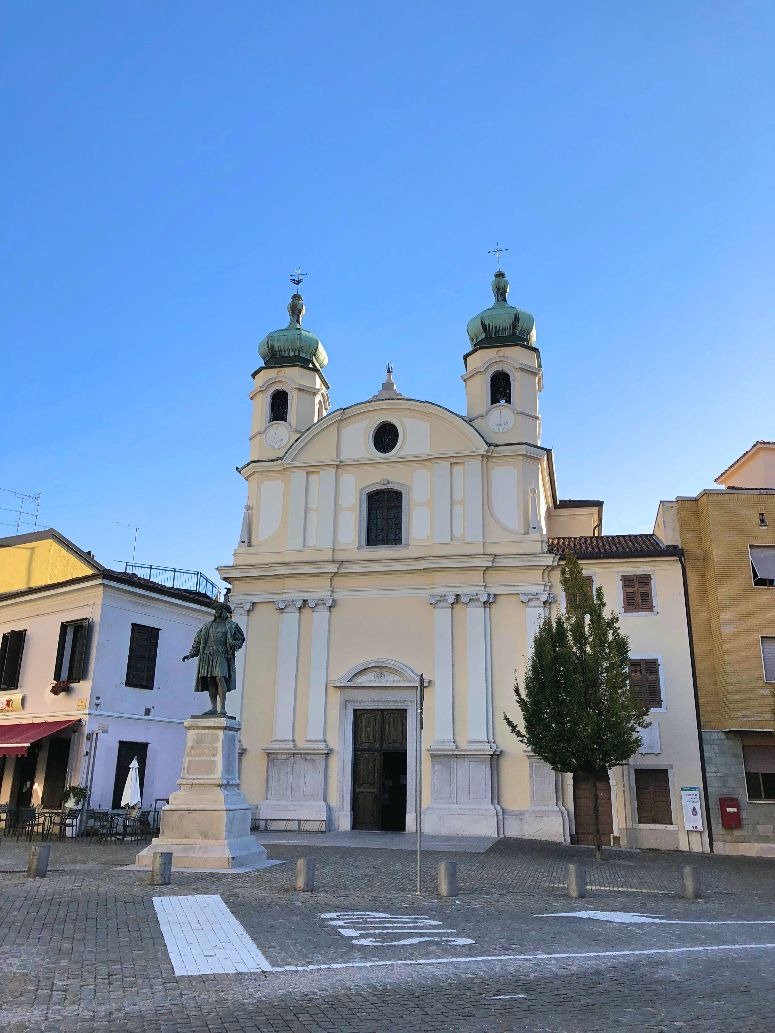
Cormòns, I discovered, is famous for being a centre of wine and ‘slow food’ cuisine. There are tasting places and enoteche in and around the town. Recommended to me, is the Enoteca di Cormòns in Piazza XXIV Maggio. I need to return to Cormòns.
5. Prepotto
The tiny village of Prepotto is right on the border with Slovenia. More importantly, it is where the red wine Schioppettino is produced. This wine, also known as Ribolla Nera, is an indigenous wine only revived thirty years ago. I was visiting Prepotto for this, first having tried the wine in Rome at the enoteca Cul de Sac. In the village, there is a sensational trattoria enoteca, Trattoria Da Mario Enoteca dello Schioppettino where you can do a well-recommended wine tasting.
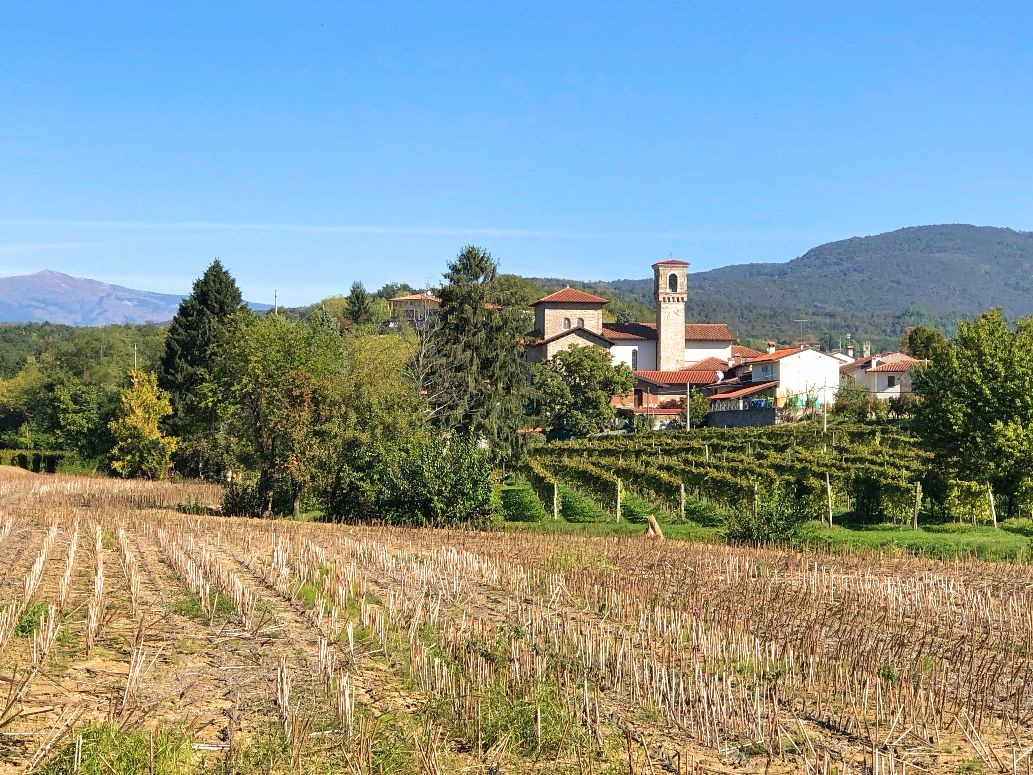
Before visiting the trattoria, I went for a walk in and around the vineyards. Prepotto is so close to the Slovenian border that I was always stepping back and forth between the two countries. Road signs are in both languages. Returning to the trattoria, I in my best practiced Italian sampled three wines. I stayed for a fantastic lunch and had a couple of glasses of the Schioppettino wine I liked the best.
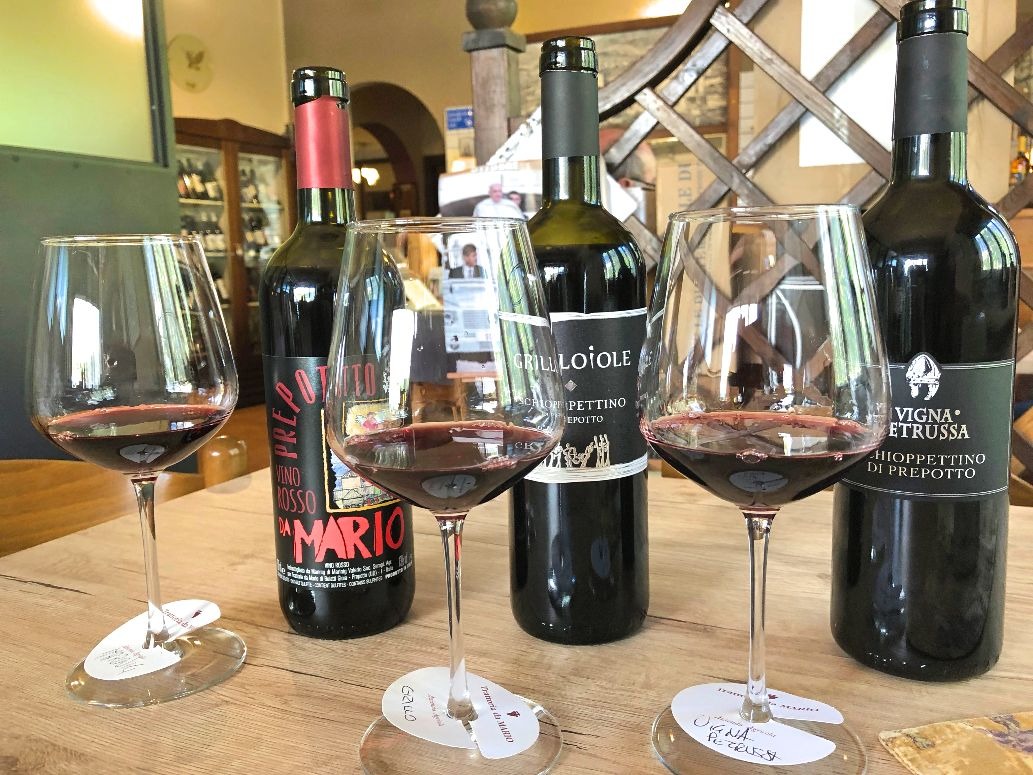
The trattoria is very popular for cyclists and day trippers from Slovenia. During my lunch, I must have counted five different languages spoken, none of them English.
6. Cividale dei Friuli
The charming town of Cividale dei Friuli is well worth a visit. It’s a great place to wander around and admire the well-preserved buildings, many of which pre-date the Renaissance. Beginning with the main road, Corso Mazzini continue until you reach the Piazza del Duomo for the Renaissance-inspired cathedral. Not far from the Duomo is the Museo Archeologico Nazionale in Piazza Diacono. Well worth a visit is the 8th-century sacred building of Tempietto Longobardo on Via del Monastero Maggiore.
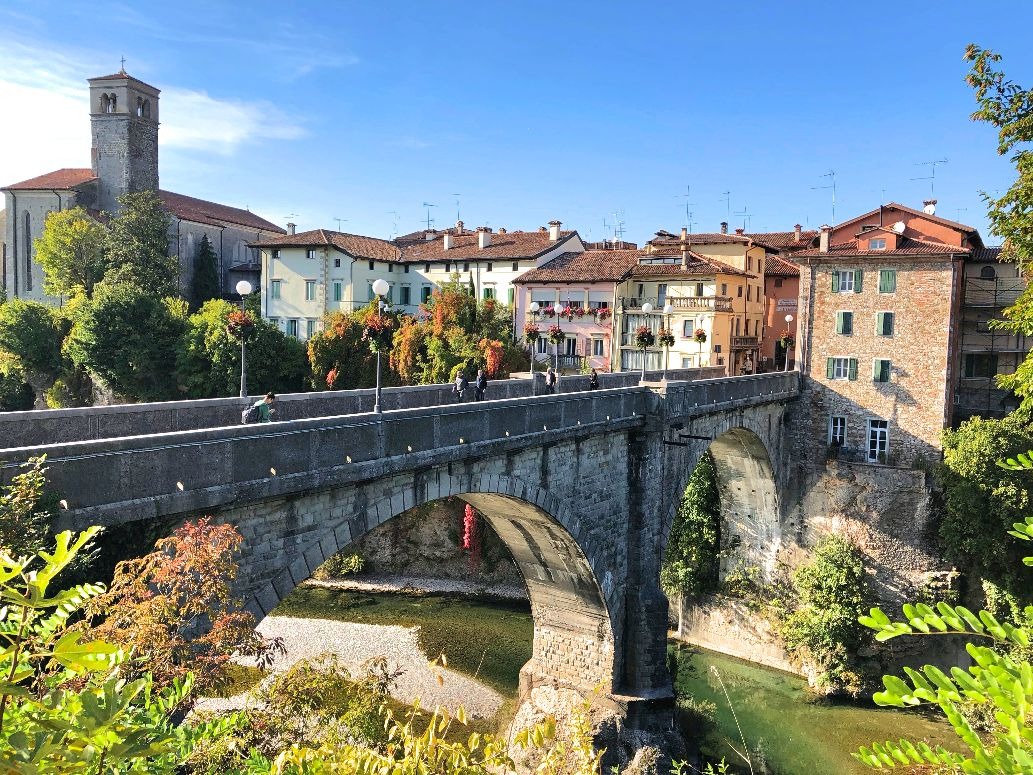
Returning to Piazza del Duomo head down Corso Paolino d’Aquileia for one of the prettiest views in Cividale dei Friuli. Cross the Ponte del Diavolo (Devils Bridge) and look back towards Cividale. The bridge was built in the 15th century to join the high rocky banks of the River Natisone. The view gets better as you walk beside the top banks.
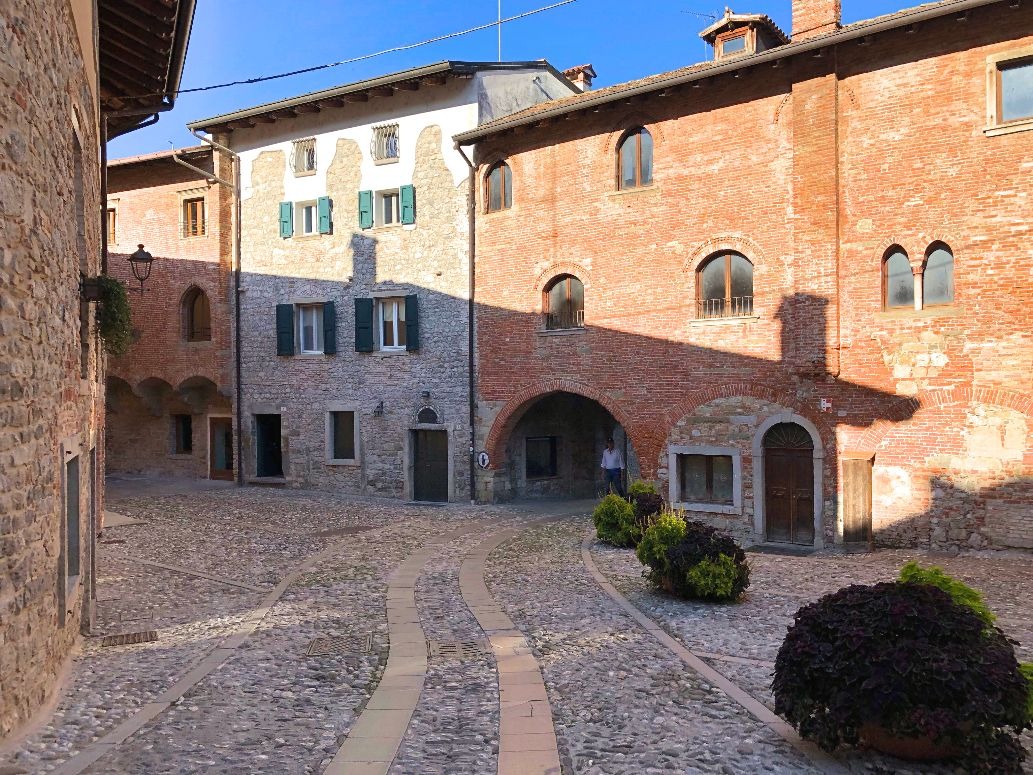
Back across the bridge, there are many more medieval streets and squares to explore, including Piazza San Francesco, Piazza Diaz and Stretta del Mulinuss. Cividale dei Friuli can be reached by rail and bus from Udine.
7. Trieste
On the Adriatic coast and the Slovenian border, Trieste is a bustling port city. The harbour is enormous and lined with grand buildings. Heading slightly inland will take you to one of the beautiful piazzas in Italy, Piazza Unità d’Italia.
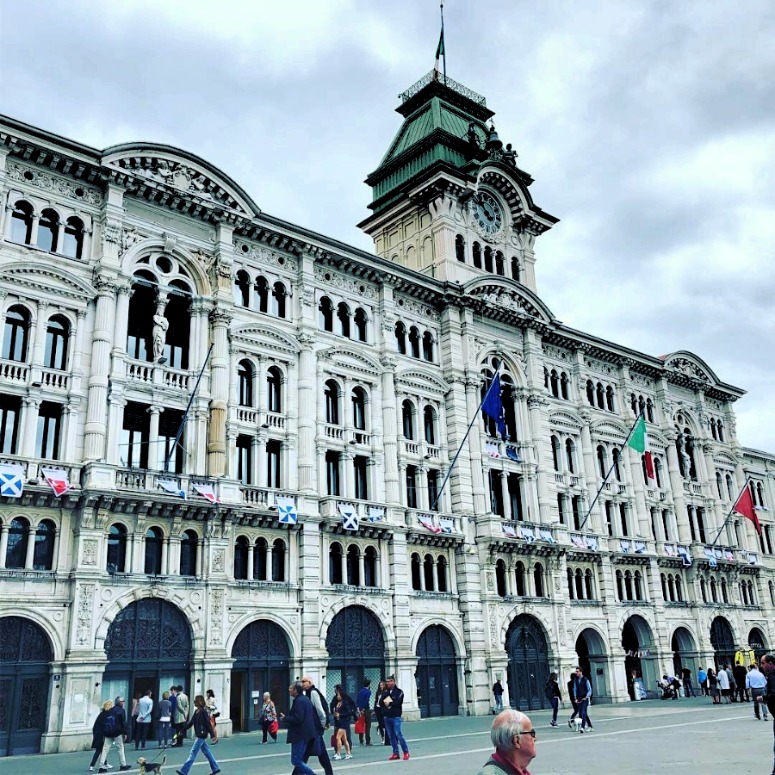
The architecture reflects a time when Trieste was the most important port of the Austro-Hungarian empire. As well as grand buildings there is the enormous fountain – Fontana dei Quattro Continenti. Trieste has some great churches, including the Duomo in Piazza Cathedrale, the Serbian orthodox Saint Spyridon. There is also the Greek Orthodox church of St Nicholas and the Catholic church Chiesa di Santa Maria Maggiore. Street signs in Trieste are in both Italian and Slovenian.
Trieste, I discovered, takes coffee very seriously. Coffee first came to Italy via Trieste. There are some sensational cafes here.
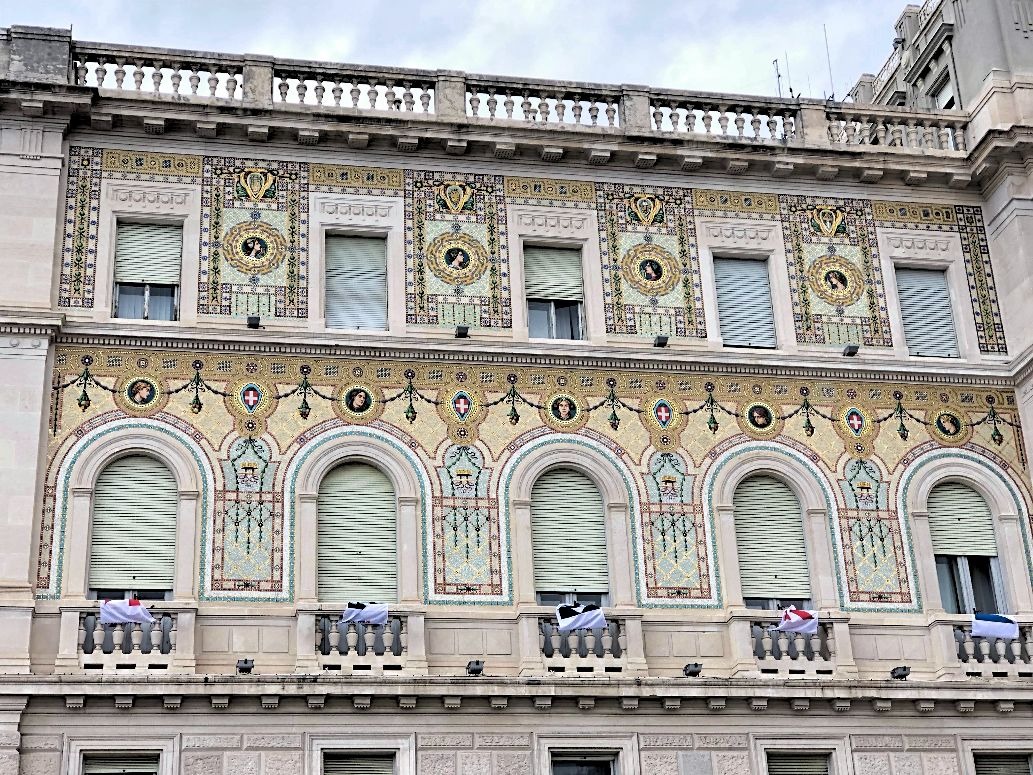
The streets in and around Piazza Unità d’Italia and Piazza Cathedrale, notably Via San Nicolo have beautifully maintained cafes from the 19th century. It is difficult to narrow down to just one, but I would recommend Caffè San Marco in Via Cesare Battisti. This caffè was once a meeting place for intellectuals, including James Joyce. A city to return to, for sure.

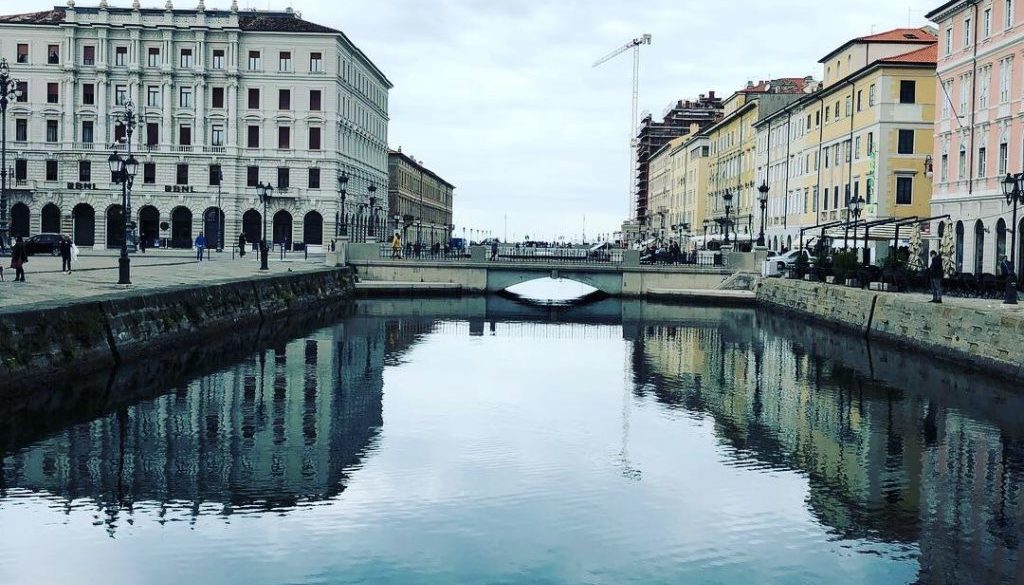
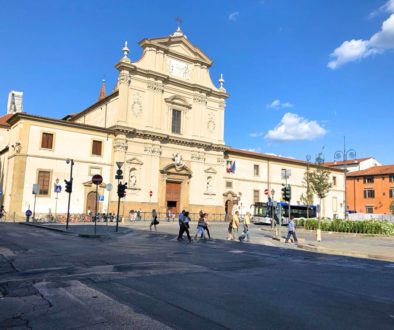
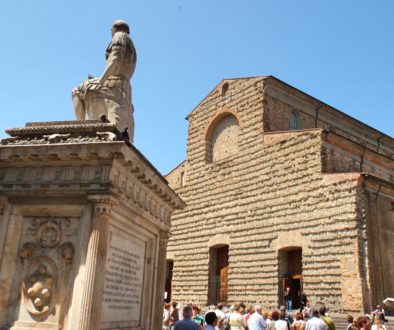
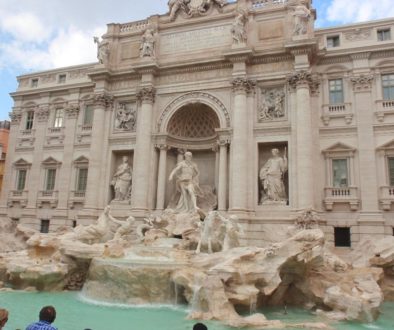
October 10, 2021 @ 5:21 am
I was recommended this web site by my cousin. I am no longer positive whether this put up is written by
him as no one else recognise such certain about my difficulty.
You are amazing! Thanks!
October 17, 2021 @ 6:33 pm
Oh my goodness! Amazing article dude! Many thanks, However I am
encountering issues with your RSS. I don’t know why I can’t subscribe
to it. Is there anybody having identical RSS issues? Anybody who knows the solution can you kindly respond?
Thanx!!